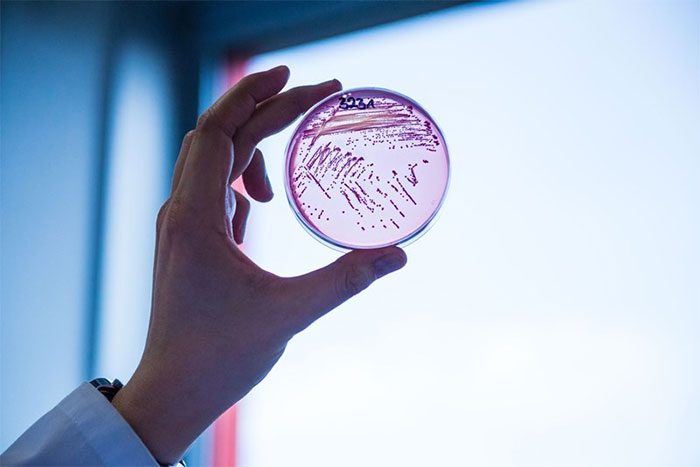American Scientists Discover Vampire-Like Behavior in Certain Bacteria That Hunt and Consume Human Blood.
For a long time, scientists have struggled to explain why certain bacteria such as Salmonella and E. coli can move from the intestines into the bloodstream, leading to fatal outcomes in some cases.

A sample of E. coli bacteria. (Photo: University of Giessen, Germany).
Recently, a research team at the University of Washington discovered that these bacteria are attracted to the liquid portion of blood (serum), where they find nutrients they consider food.
They can easily “smell” the location of the serum and invade the bloodstream through small scratches in the digestive system. Even the smallest amount of blood is enough to attract these “vampire bacteria,” similar to how sharks can detect blood in water.
Co-author of the study, Professor Arden Baylink, stated: “Bacteria that infect the bloodstream can be deadly. We found that certain bacteria commonly cause bloodstream infections and can sense a chemical in human blood, swimming towards it.”
The study’s findings were published in the journal eLife. According to the research, gut bacteria such as E. coli and Salmonella can detect even just 1 femtoliter of serum – an incredibly tiny measurement equivalent to 0.0000000000001 ml. When they detect a bleeding scratch in the intestines, they will surround and penetrate it.
The research team monitored the process of bacteria seeking serum and noted that this occurs in less than a minute. In this case, the bacteria rely on chemotaxis and move towards areas with higher concentrations of certain substances.
Scientists believe that this new study on how bacteria invade the bloodstream paves the way for advanced medications that could prevent septic infections before they occur.
Under normal circumstances, there are bacterial populations in the intestines that are often considered harmful, such as E. coli and Salmonella. When healthy, other bacteria and our immune system control these harmful bacteria. However, if these bacteria manage to enter the bloodstream, they can lead to septic infections.




















































